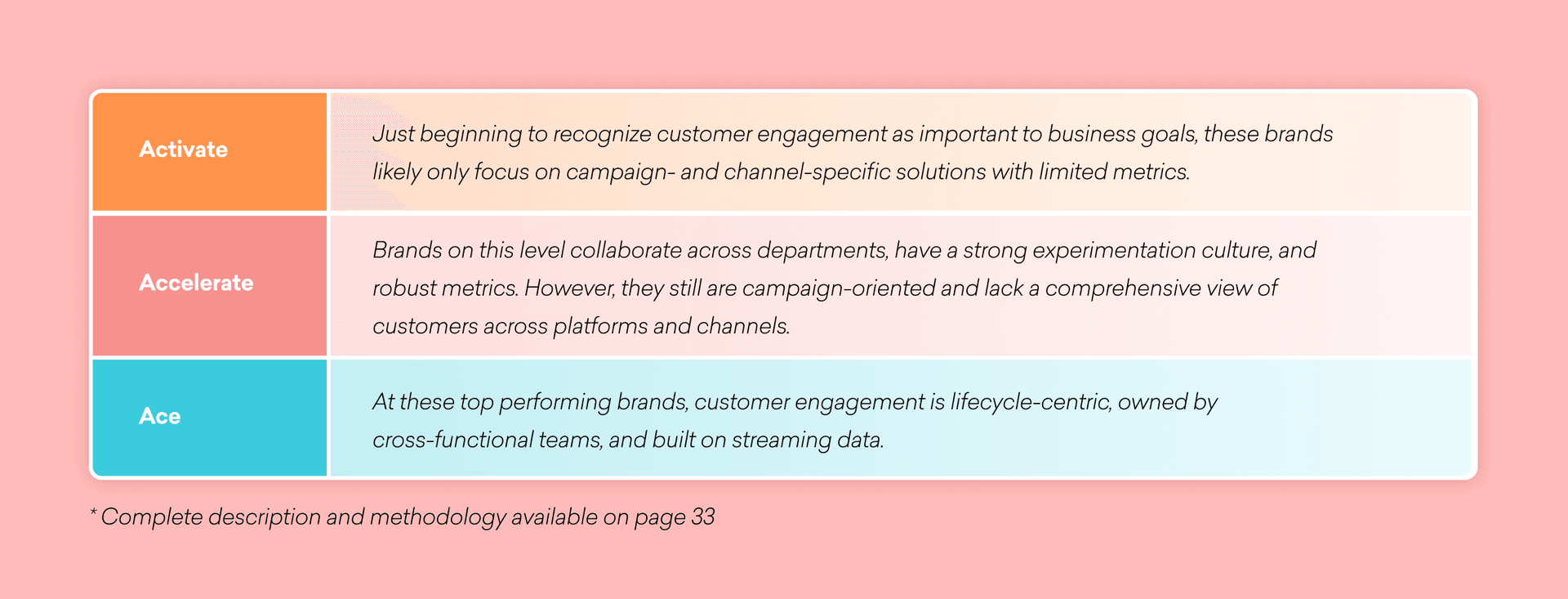Understanding The Hows and Whys of Customer Engagement
Published on April 14, 2022/Last edited on April 14, 2022/7 min read


Team Braze
It’s no secret that customer engagement is effective: Brands that take a cross-channel approach to their customer messaging strategy see higher customer lifetime value and lower acquisition costs, all of which are integral for long-term success. To help brands better understand the hows and whys of customer engagement, we spoke to Magith Noohukhan, Evangelist at Braze, about his role, this year’s top trends, and how to take advantage of today’s customer engagement opportunities.
What does a Customer Engagement Evangelist do?
As a Customer Engagement Evangelist, my job is to educate and empower every brand on how to create meaningful conversations with their customers that will allow them to forge human connections from the very beginning of their journey. I help answer the question: “What can brands do to acquire, retain, and build lifetime value with their consumers?” In addition, I regularly speak at conferences and events to provide thought leadership around the state and future of customer engagement.
What are the top trends in customer engagement in 2022?
For our 2022 Global Customer Engagement Review, Wakefield Research—on behalf of Braze—conducted a survey of 1,500 VP+ marketing executives from business-to-consumer (B2C) companies with an annual revenue of $10+ million across 14 global markets. With that data, we were able to identify three pervasive customer engagement trends to watch carefully this year.
- Brands are more confident than ever about customer engagement, and it’s paying off
- With third-party cookies on the decline, we’re entering the era of zero- and first-party data
- Data management is now the top challenge for brands, outranking all other concerns
We’re coming off a really major shift in the customer engagement landscape, with more engagement shifting online as a result of COVID-19 and brands finding themselves having to rethink their use of third-party data thanks to privacy laws and a new focus on privacy from tech giants like Google and Apple. Companies have begun to take customer engagement seriously and they’re seeing positive movement, but there are still challenges to address—especially around data—that will have a big impact on their long-term success.
Does a cross-channel customer engagement strategy pay off when it comes to influencing purchase behavior?
Yes, absolutely. One of the things that stood out in the report is that brands are doubling down on customer engagement and focusing on improving their capabilities. A big reason why brands are so focused on customer engagement is because they are seeing impactful results. Braze data showed an almost 50% increase in buyer likelihood between 2020 and 2021 when there’s a cross-channel strategy in place. There’s immediate benefits as well, as just by adding a single channel, there’s a 4X increase in purchase per buyer and 2.8X in likelihood to buy. Creating a blend between in-product channels like in-app messages and out-of-product messages like SMS or email doesn’t only create brilliant customer experiences—it also increases revenue.
Where do brands excel right now with teamwork and where are the opportunities for improvement when it comes to team and organization?
Before we jump in, I want to share what the competencies are all about. Last year, Braze developed a proprietary framework based on organizational and technological themes to help assess the maturity of brands’ customer engagement strategies. The Tech competency has six key factors, which includes channels, classifications, data, orchestration, performance, and personalization. The Team competency has six key factors including culture, experimentation, metrics, objectives, staffing, and strategy. Based on these competencies, brands' customer engagement efforts are assessed as either Ace (high maturity), Accelerate, or Activate (low maturity).

The top Team competency where brands excel is experimentation. Ace brands run experiments that are complex, concurrent, and cross-departmental, often partnering with data teams to ensure experiments are set up and measured correctly. 33% of brands are continuously experimenting and pulling in-depth insights, which is amazing.
One place where brands can improve is the strategy competency. While most brands take into account engagement and downstream metrics, they also need to consider customer sentiment, company goals, and product in their strategies. After all, silos don’t just happen when it comes to data—they can happen with goals and KPIs, too.
With the Tech competency, where do brands excel and where are the opportunities for improvement?
The top competency where brands excel on the Tech side is classification. For the second year in a row, classification is the highest-scoring competency. More brands moved up from the Activate level, with 33% of brands ranking as Ace for Classification in 2021 vs. 32% in 2022. That reflects a serious focus on audience-building and segmentation, which is so important for today’s customer engagement programs.
And where do we see room for improvement? Orchestration. The use of a single primary messaging channel declined from 20% in 2020 to 15% in 2021, showing that brands are realizing it’s no longer enough to reach customers on a single channel. However, many companies shifted to using multiple channel-specific solutions, rather than adopting a single cross-channel solution. That’s an issue, because using multiple solutions to orchestrate campaigns often means that brands have an incomplete view of their customers due to data latency or incompatible technologies.
What sets an Ace brand apart from the Activate and Accelerate brand?
This is my favorite question. What is it that the Ace brands are doing differently, which is helping them to create better customer experiences and better results? Of course, Ace brands continuously develop their use of both technology and teamwork—and thus reap the full benefits of customer engagement. Whether it’s using multiple channels or developing their mindset to regularly test and experiment, Ace brands are always looking to evolve their practices.
On the Tech side of things, Ace brands are:
- 14% more likely to be using 3+ channels
- 25% more likely to use a single solution to orchestrate cross-channel campaigns
On the Team side of things, Ace brands are:
- 2.3X more likely to actively experiment with campaigns and customer journeys across channels
- 42% more likely to have employees trained on customer engagement technologies and approaches
This focus on experimentation, thoughtful use of technology, and providing cohesive brand experiences is a big part of what sets them apart from the Activate and Accelerate brands.
In the retail and eCommerce industry, almost everything happens online. What should brands do to achieve success in this industry?
As we all know, some industries had to scramble to handle the acceleration to digital caused by the COVID-19 pandemic. But the retail and eCommerce industry was ready; in fact, 76% of these brands had already been using mobile as a channel for engagement for 6+ years. However, to achieve better results, these brands need to focus on experimentation, strategy, and staffing in order to reach more shoppers, build better relationships, and help address the upcoming challenges associated with the dissolution of third-party cookies. Also, brands should work on improving technical capabilities, which will enable the operationalization of zero- and first-party data use and help them drive responsive, relevant customer experiences in real time.
How do you see the future of machine learning (ML) and AI shaping brands’ customer engagement strategies?
Technology should enable and empower every marketer to do the things they need to do, such as spending more time strategizing the next big ideas for engaging with their consumers, rather than burning bandwidth on basic, repetitive tasks. And with every campaign, a lot of decisions need to be made about what to serve, when to serve, and how to serve. Accordingly, machine learning (ML) and AI can help automate those small decisions for brands so that they can focus on major milestones. Putting ML tools in the hands of marketers will empower them to effectively leverage and act on data directly within the platform, which creates brilliant customer experiences.
Find Your Customer Engagement People: Become a Bonfire Member
Looking to uplevel your customer engagement efforts? Join Bonfire to connect and learn from thousands of customer engagement professionals from all over the world.
Already a member? Help spread the word and encourage your colleagues or other Braze users to register today.
Related Tags
Be Absolutely Engaging.™
Sign up for regular updates from Braze.
Related Content
View the Blog
How behavioral marketing turns data into personalized experiences

Team Braze

What is a multi-armed bandit? Smarter experimentation for real-time marketing

Team Braze

Data-driven decisions: How startups can use reporting and analytics to enhance customer engagement
